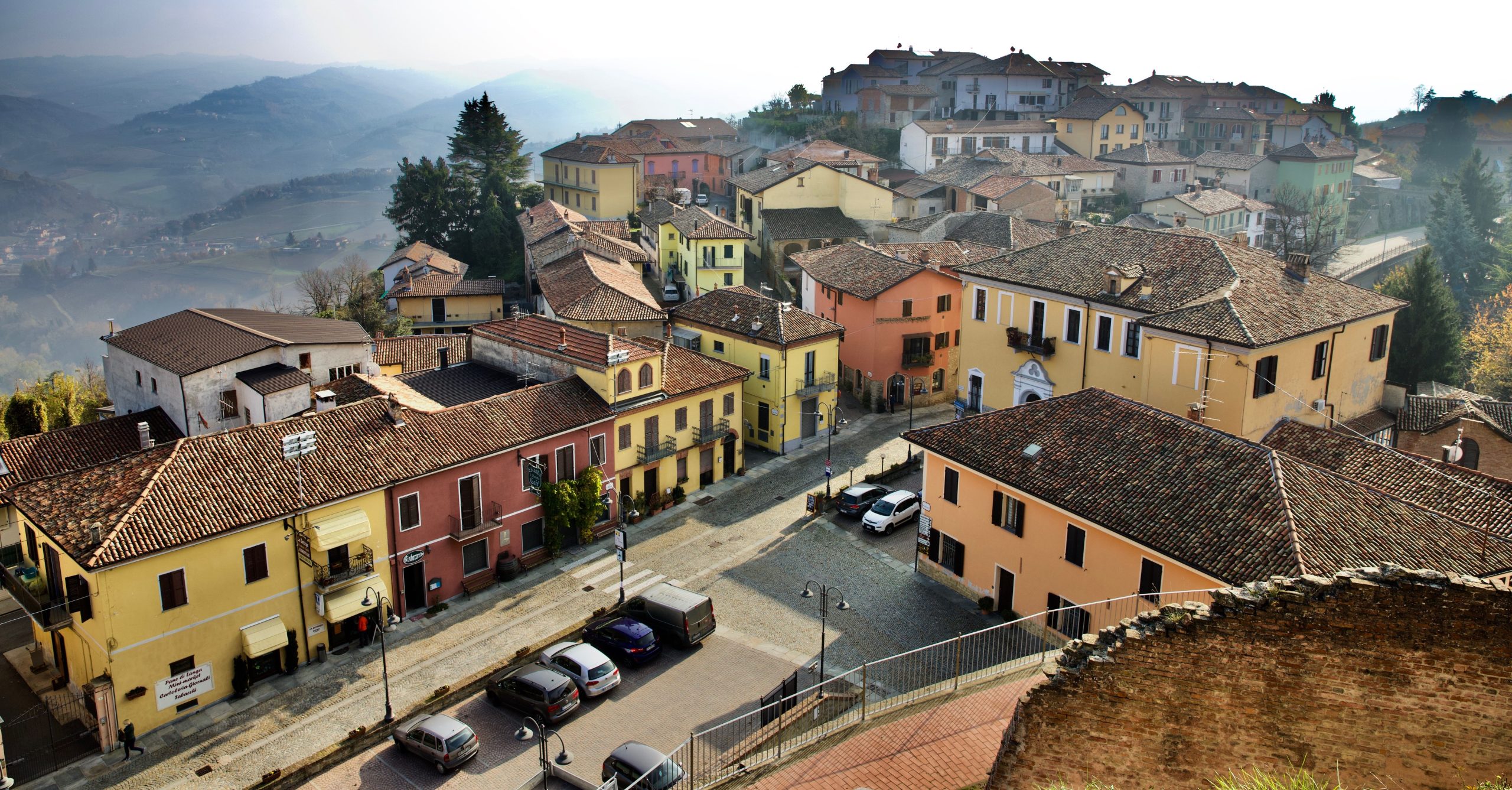
Diano d’Alba
A few kilometers far from Alba, Diano is divided in three separated areas: the historical center, the Talloria valley, where many wine-makers have their farms, and Ricca, where the industries are.
From the castle walls it’s possible to see the Barolo vineyards and the hills of the Langhe.
To the Dolcetto di Diano d’Alba the fair is dedicated; it takes place in June.
History
Its name is probably a tribute to the goddess Diana, patron of hunting and of the woods.
Diano has a millennium-long history: in the Middle Ages it has been a powerful military town, even more powerful than Alba itself.
Occupied and burned down in 1361 by mercenary soldiers lead by Leonetto of England, it was then owned by the Visconti di Milano family, then by the Savoia; it always was contended by the Savoia, the marquis of Monferrato, the dukes of Milan and Venice.
With the peace of Cherasco, in 1631, it definitely became a property of the Savoia family, and of Vittorio Amedeo I di Savoia.
Diano d’Alba high upon the hill
Somehow it took me a while to discover Diano d’Alba, probably because it is so small and I must have passed it many times without really discovering its beauty.
It is one of the first villages you drive through when you take the ‘Strada Romantica delle Langhe’ over the hills’ crests to the south; it is called the romantic road because the views from this route tickle all the senses, rendering a warm loving feeling.
As I now know the beauty of Diano d’Alba, I very much recommend you stop here and walk up the hill towards the church.
From the hilltop you can see the whole region and the Alps in the distance on a clear day.
As you are in such an elevated position, you can see from the North-Eastern Alps to the Mediterranean Alps in the South-West.
They have made a sweet little park with some benches to take your time to breathe in the wonderful atmosphere.
Origins
The name Diano is probably a tribute to the goddess Diana, patron of hunting and of the woods.
Diano dates back to the Middle Ages and was historically more powerful than Alba; probably due to its strategic and elevated position.
Like many other villages in the Langhe, its ownership passed through the hands of some important families, from the Visconti family from Milan, to the Savoy, the marquis of Monferrato, the dukes of Milan and Venice, and with the Cherasco peace treaty in 1631 back to the Savoy.
Food & Drinks
One of the nicest things to do is to have breakfast in Diano d’Alba at the ‘panetteria’ (bakery) 'na Mica 'd Pan’.
The bakery is in a small street that curls along the hillside; from the large shop window, you see the full panorama whilst sipping your cappuccino and nibbling on your freshly baked ‘cornetto’.
Further up the street you will find the very good bar-restaurant Unione Agricola di Marengo with equally nice views and the winery Cantina Comunale dei Sorì di Diano d'Alba a bit further to the left.
On the village square Locanda da Batista serves traditional Piedmontese food as it has done for generations.
You’re best going for the set menu, just don’t be surprised by how many courses will be served.
Make sure you do not eat too much of the starters and leave some space for the desserts! Other popular restaurants in this area are Il Cortile located between Diano d’Alba and Grinzane Cavour amidst the vineyards and Piazza on the tiny village square of Montelupo Albese.
My favourite winery is also in Diano d’Alba: the Fratelli Savigliano are two brothers that work together to produce some of the best wines in the region.
They, and their families, are most welcoming and will always have time to treat you to a great wine-tasting and some lovely snacks.
A great place to buy some reasonably priced, high quality wine to take home.
